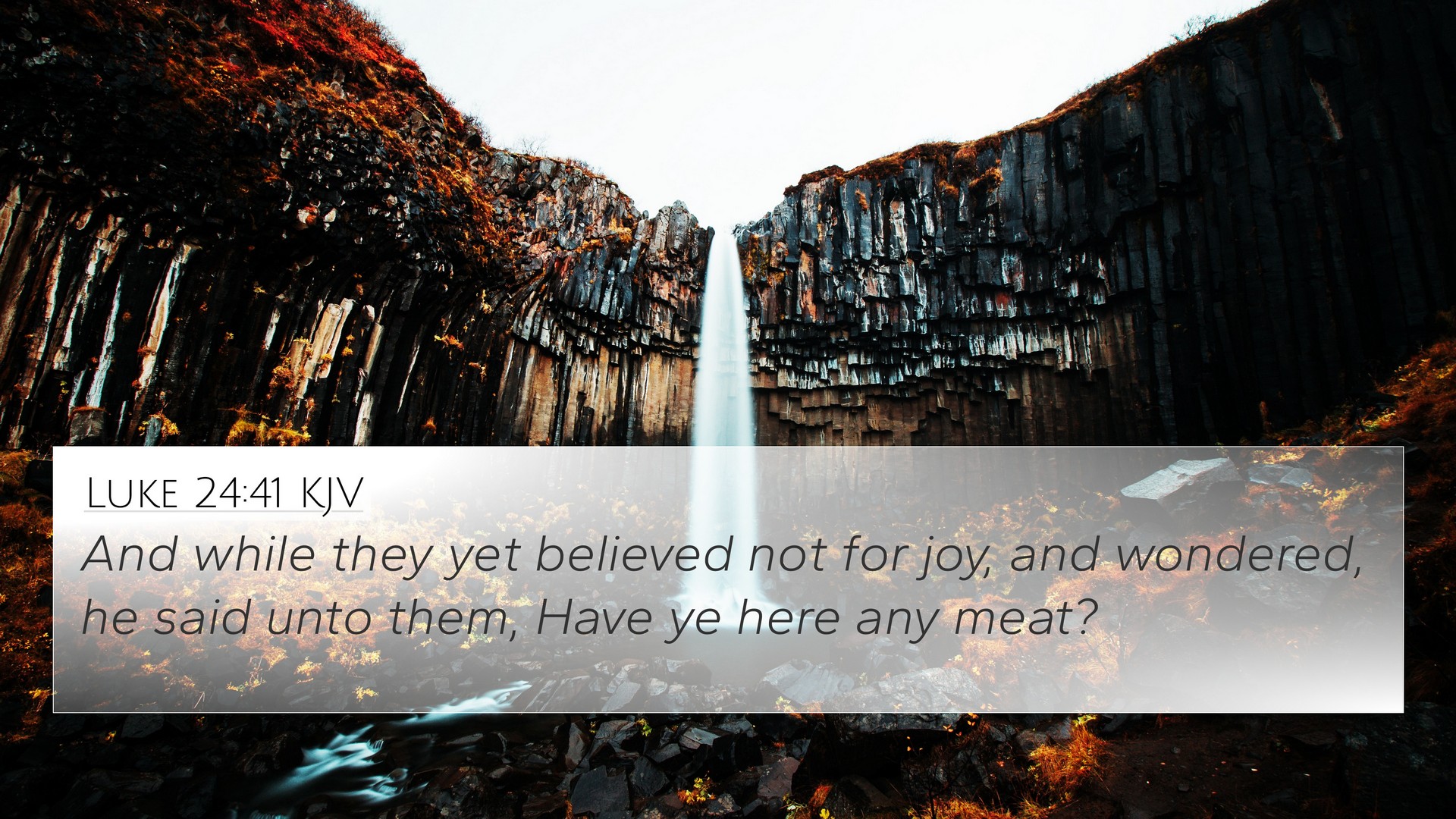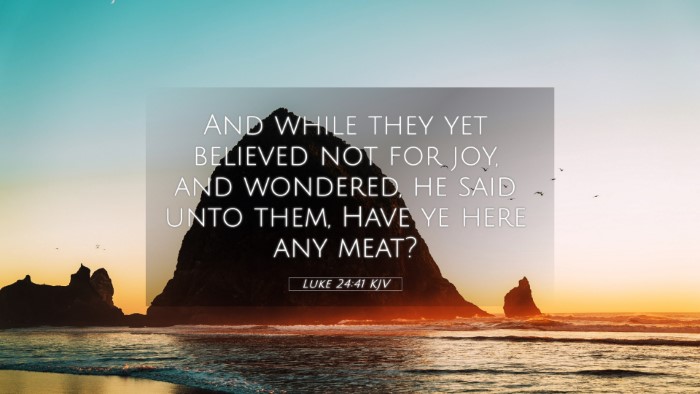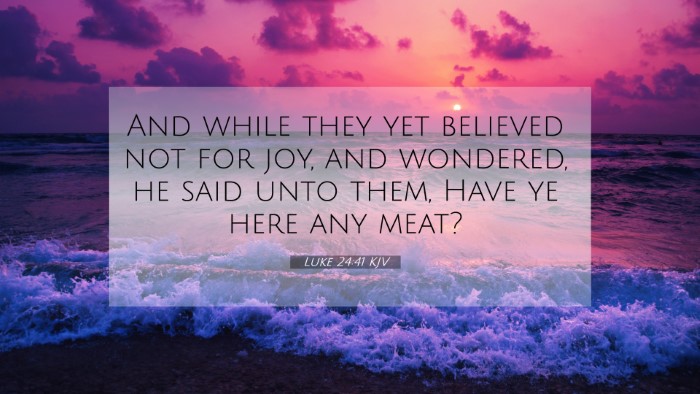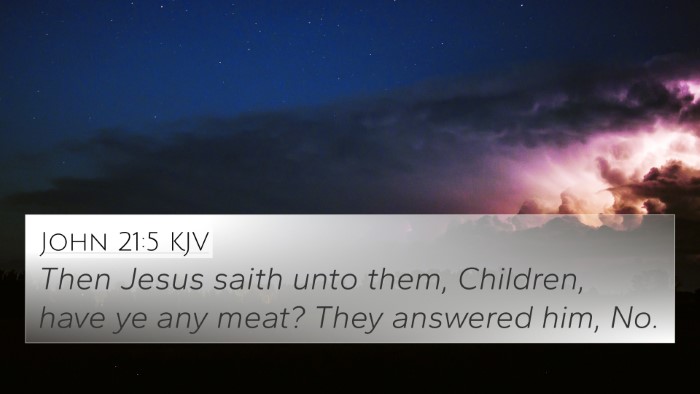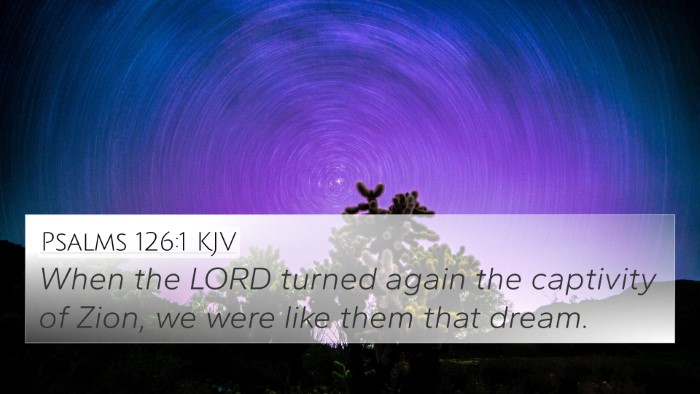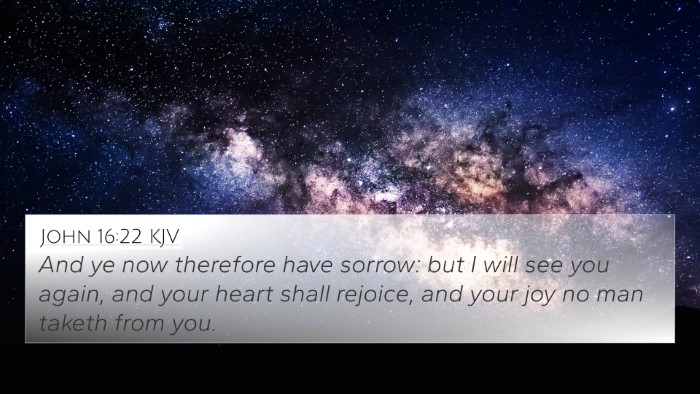Understanding Luke 24:41
Luke 24:41 states, "And while they still did not believe it because of joy and amazement, he asked them, 'Do you have anything here to eat?'"
Summary of Meaning
This verse captures a profound moment in the post-resurrection appearance of Jesus to His disciples. The disciples are portrayed as feeling joy and amazement, yet they struggle to fully believe in the reality of the resurrection. Their doubt is juxtaposed with their excitement—indicating a transformative moment in their faith.
Connections in Scriptural Context
The verse emphasizes the theme of disbelief and the process of coming to faith. This challenge is also seen in other scriptural passages:
- Matthew 28:17: The disciples doubted even as they worshipped Him.
- John 20:29: Jesus remarks on blessedness for those who believe without seeing.
- Mark 16:14: The disciples were rebuked for their unbelief following Jesus’ resurrection.
- Luke 24:12: Peter runs to investigate the empty tomb, demonstrating both curiosity and skepticism.
- Acts 1:3: Jesus presented Himself alive to the disciples with many convincing proofs.
- 1 Corinthians 15:6: Paul notes that Jesus appeared to more than five hundred at one time.
- Luke 16:31: The concept that even someone rising from the dead would not convince those unwilling to believe.
Interpretations from Public Domain Commentaries
Matthew Henry
Matthew Henry suggests that the disbelief of the disciples stems from their overwhelming joy and amazement. The human tendency to doubt in the presence of the miraculous is a common theme in scripture. He notes that Jesus's request for food serves to affirm the physical reality of His resurrection, emphasizing the importance of physical evidence in strengthening faith.
Albert Barnes
Albert Barnes expands on the disciples' amazement, highlighting that their joy was paired with bewilderment. The confusion reflects the profound nature of witnessing someone return from the dead—an expectation that challenges human understanding. Barnes illustrates that Jesus's gentle inquiry about food also signifies His humanity and the authenticity of His resurrection.
Adam Clarke
Adam Clarke discusses the significance of the disciples' emotional state, emphasizing that joy often accompanies transformative events, but can also lead to disbelief. Clarke points out that Jesus's interaction reveals His desire to alleviate their fear. By requesting something to eat, He intentionally seeks to ground their emotions in tangible reality.
Thematic Connections in the Bible
This verse illustrates several key themes within the New Testament:
- Disbelief and Faith: The struggle to believe in the midst of great joy is a prominent theme that appears in various forms throughout the scripture.
- Resurrection Reality: The physical presence of the resurrected Christ serves as a crucial element in establishing the truth of His resurrection and the basis for Christian faith.
- Interaction with the Ordinary: Jesus engaging in a common activity, like eating, connects the divine to daily life, emphasizing that the mundane can be sacred.
- Emotional Reactions to the Divine: The complexity of human reactions to miraculous events highlights the need for patience and understanding in faith development.
Cross-References for Deeper Study
For those wishing to explore related passages, consider these cross-references:
- Luke 9:7-8: Herod's confusion about Jesus' identity, paralleling the disciples' struggles.
- John 21:12-13: A post-resurrection breakfast that further emphasizes Jesus's physical presence with His disciples.
- 1 John 1:1: Apostolic testimony about the tangible reality of Christ.
- Philippians 2:5-8: The dual nature of Christ—divine and human—underscoring His ministry.
- Hebrews 2:14-15: The significance of Christ's incarnation in relation to humanity's struggles with doubt.
- Luke 24:36-39: Further dialogue about Jesus's physical presence post-resurrection.
- Acts 2:32: Peter’s proclamation about the resurrection validates the reality of their experiences.
Conclusion
Understanding Luke 24:41 allows us to see the depth of human emotion in response to divine revelation. The interplay of disbelief, joy, and the quest for physical evidence in faith journeys are recurring themes throughout the scriptures. Through the lens of cross-referencing, we are able to absorb insights that enrich our understanding of the resurrection and its implications for believers.
The exploration of inter-Biblical dialogue exemplified in this verse provides a deeper insight into the experiences of the disciples and offers a richer understanding of the narrative of salvation that weaves throughout the Bible.
